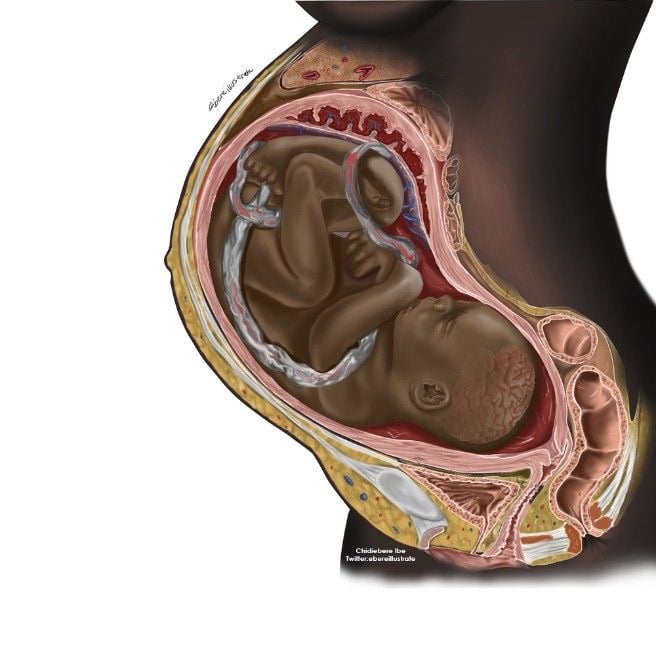Art & Tech
A Nigerian Medical Student Wondered Why His Textbooks Only Depict White Patients. So He Drew His Own Illustrations—and They Went Viral
The status quo in medical illustration needs to change, medical student Chidiebere Ibe believes.

The status quo in medical illustration needs to change, medical student Chidiebere Ibe believes.

Sarah Cascone

What is missing from medical textbooks? Illustrations showing non-white bodies. This lack of representation has long been the status quo, but Chidiebere Ibe, a 25-year-old first-year medical student at Ukraine’s Kyiv Medical University, is hoping to help change that—starting by making his own medical illustrations featuring Black men, women, and children. His work has found an eager audience online among medical professionals and laypeople alike.
“Textbooks are essential to medical training,” Ibe wrote on YouTube. “They walk medical trainees through conditions they will encounter during their practice. The skin is an important organ that protects us and can signal when something is wrong in our body. Yet, most medical illustrations are on the Caucasian skin. This lack of diversity has important implications for medical trainees and their future patients because many conditions and signs look different based on the patient’s skin color.”
On November 24, Ibe posted a drawing of a Black fetus in utero on social media, calling for more diversity in medical illustration. The drawing struck a chord with viewers, many of whom had never realized they had never seen a Black figure in medical diagrams. Since then, his post has received close to 74,000 likes on Instagram, plus over 2,000 shares on Twitter.
“It’s not a norm for the physician to care properly” for Black people, Ibe told Artnet News, noting that the lack of understanding of how diseases can appear for Black patients can lead to “mortality, child birth pains, wrong diagnosis, [and] communication problems.”

Chidiebere Ibe. Photo courtesy of the artist.
The artist, who is from Ebonyi State, Nigeria, taught himself to draw during lockdown. He chief medical illustrator and creative director of the Journal of Global Neurosurgery, and plans to become a pediatric neurosurgeon.
Ibe has set up a GoFundMe page to help fund his education and to promote the need for Black representation in medical illustrations for textbooks, public-health materials, and other publications. To date, he’s raised £24,723 ($32,873), far exceeding his original goal of £15,400 ($21,400).
“I never expected it to be viral,” Ibe told HuffPost UK. “The whole purpose was to keep talking about what I’m passionate about—equity in healthcare—and also to show the beauty of Black people.”
Ibe’s work resonates because issues of racial inequality in healthcare go far beyond the artworks used in the medical field. There is a long history of Black Americans being mistreated by the health care system. (They have also been disproportionately impacted by the pandemic.) Black women have the highest maternal mortality rates, Black men have lower life expectancy than other racial and ethnic groups in the U.S., and Black patients are less likely to receive preventative care than their white counterparts.
In 2018, only five percent of active physicians were Black, according to the Association of American Medical Colleges. If medical textbooks and other health-related illustrations were more reflective of the Black community, perhaps more Black men and women would be inspired to attend medical school, Ibe said. And with more illustrations showing how different medical conditions present themselves in Black bodies, he believes, doctors would be better equipped to treat Black patients.
The artist and future doctor is heartened that the response to his drawings could portend a better future for health care for the global Black community. “The wave of change is here,” Ibe said.